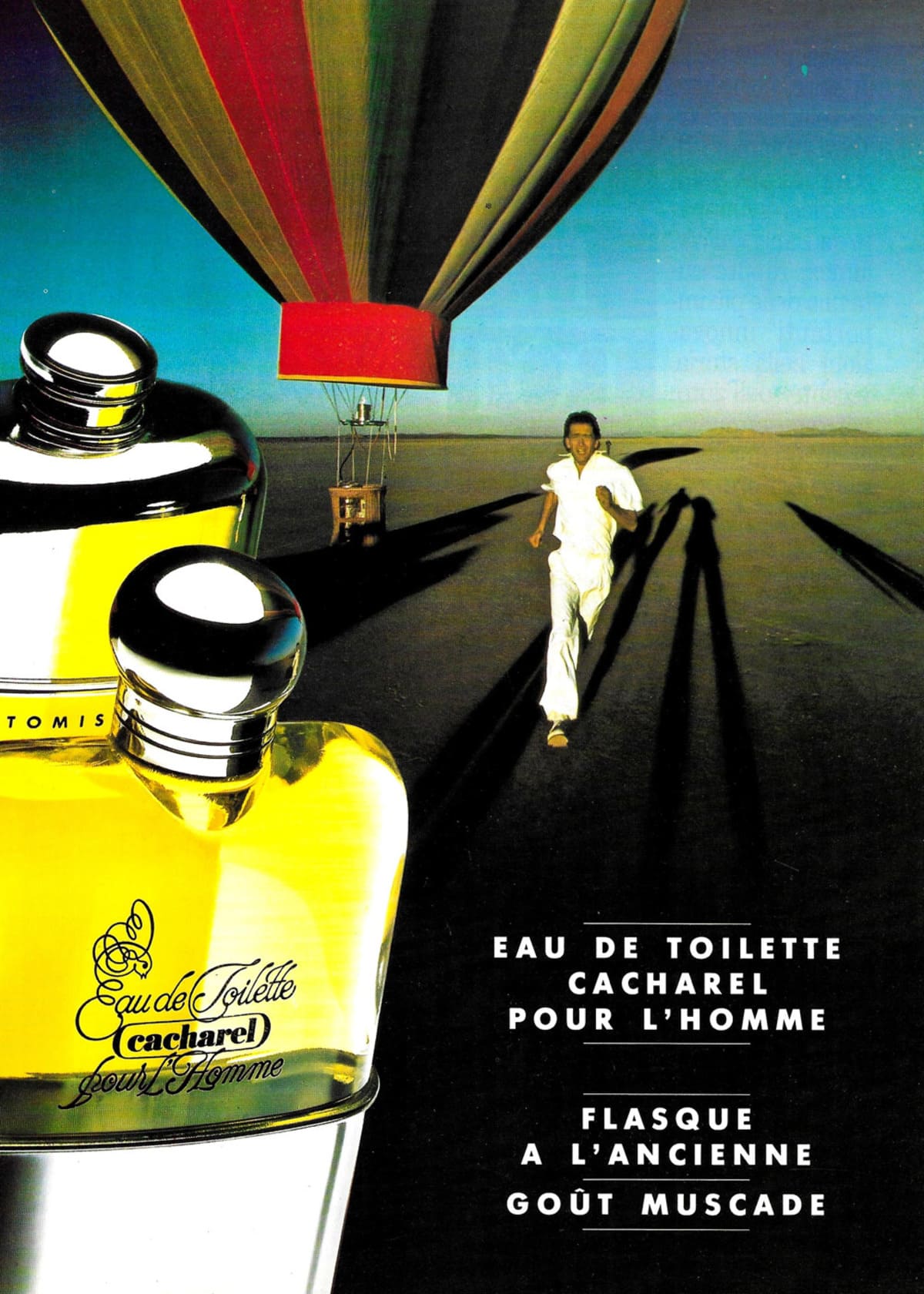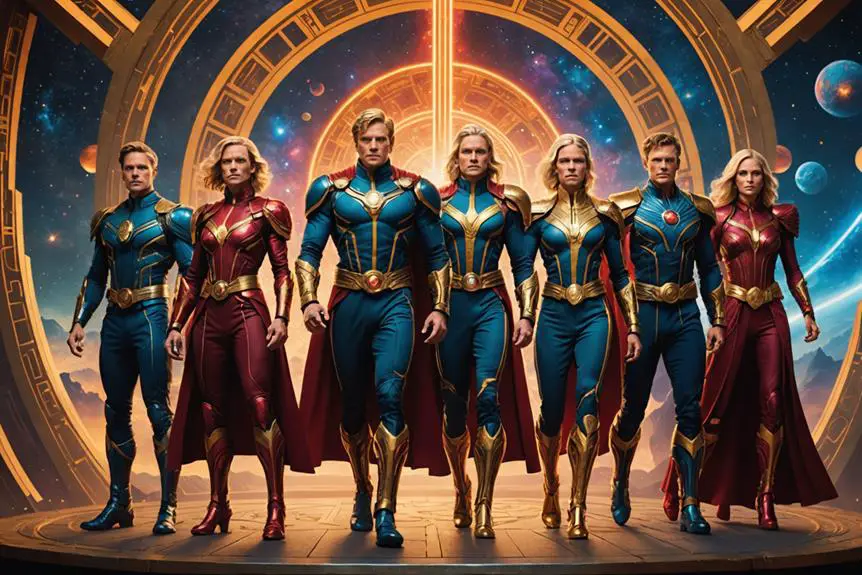Named after a local duck in the Camargue region of France, Cacharel has carved out a unique niche in the world of fashion, characterized by its use of bright colors, refined designs, and a youthful aesthetic. The brand’s history is a tapestry of innovation and iconic fashion moments, beginning with the introduction of the seersucker blouse that catapulted Cacharel onto the international stage in the early 1960s. This was further solidified by a striking cover feature in Elle magazine, marking the brand’s emergence as a global fashion player.
Jean Bousquet’s journey from the son of a sewing machine salesman to a fashion mogul is a testament to his vision and passion for design. Trained as a tailor, Bousquet’s early experiences and inherent understanding of garment construction laid the foundation for Cacharel’s success. His revolutionary approach to women’s fashion, particularly with the crepon shirt and the Liberty dress, captured the spirit of the times and resonated deeply with a generation seeking freedom and expression through clothing. The crepon shirt, for instance, became a symbol of the 1960s, celebrated for its liberating silhouette and its appearance on style icons like Brigitte Bardot.
Cacharel’s ability to stay relevant while maintaining its core identity is reflected in its evolving logo and tag designs. From the vibrant and bold tags of the 1970s to the more minimalistic and streamlined designs of the 2000s and beyond, each era of Cacharel is marked by distinct characteristics that enthusiasts and collectors can use to date their pieces. This evolution is not just a testament to changing fashion trends but also to Cacharel’s commitment to innovation and adaptability.
In the modern era, Cacharel continues to captivate with new faces like Izzy Bizu and Skai Jackson, who bring fresh energy to the brand’s campaigns. Despite the changes in logo design and branding, the essence of Cacharel—its dedication to creating elegant, youthful, and refined fashion—remains steadfast. For vintage clothing enthusiasts, identifying a piece of Cacharel’s storied history can be an exciting journey, revealing the brand’s enduring appeal and the timeless nature of its designs. Whether it’s a brightly colored tag from the 1970s or a sleek, modern label from the 2010s, each Cacharel item carries a piece of fashion history that continues to inspire and delight.
Y2K Cacharel Lou Lou Commercial
How to tell if Cacharel is vintage from the logo
Cacharel, a French fashion brand known for its elegance and romanticism, has undergone several logo changes throughout its history. Identifying the era of a Cacharel item can be done by examining its logo. Here, we’ll break down the key characteristics of Cacharel logos from different periods to help you determine if your Cacharel item is vintage.
1958 to 2021 Cacharel logo
- The logo features the brand name “cacharel” in lowercase letters.
- The font used is a classic, rounded sans-serif style, reflecting the brand’s timeless and elegant aesthetic.
- Below the brand name, “Paris” is written in a smaller size, emphasizing the brand’s French origin.
- This logo was consistent for a long period, making it a staple in identifying vintage Cacharel pieces from this era.

1958 to 2021 Cacharel logo
2021 to now Cacharel logo
- The modern logo retains the lowercase “cacharel” text but with slight modifications.
- The font is more streamlined and contemporary, with cleaner lines and a more minimalist design.
- The “Paris” text is still present but has been adjusted in size and placement to match the updated aesthetic.
- This logo signifies the brand’s evolution while maintaining its core identity, and is used on recent collections.
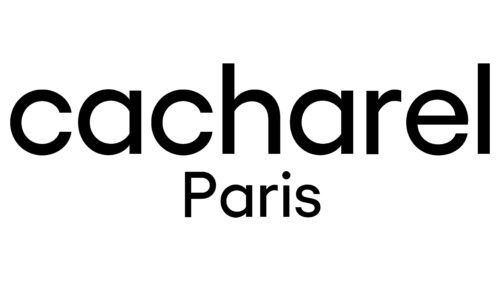
2021 to now Cacharel logo
How to tell if Cacharel is vintage from the tags
Cacharel, a renowned French fashion brand, has a rich history reflected in the evolution of its clothing tags. From the vibrant designs of the 1970s to the more streamlined and modern tags of the 2010s, each era showcases unique characteristics that can help identify the vintage nature of the garments. Below, we explore the distinctive features of Cacharel tags across different decades.
Having trouble identifying vintage tags or labels? Submit a picture on our vintage tag identification page, and we’ll assist you!
1970s vintage Cacharel tags
- Bright, colorful tags often with bold lettering.
- Designs featuring “cacharel” in lowercase, with vibrant background colors such as green and blue.
- Some tags include specific fabric composition details or size indicators.
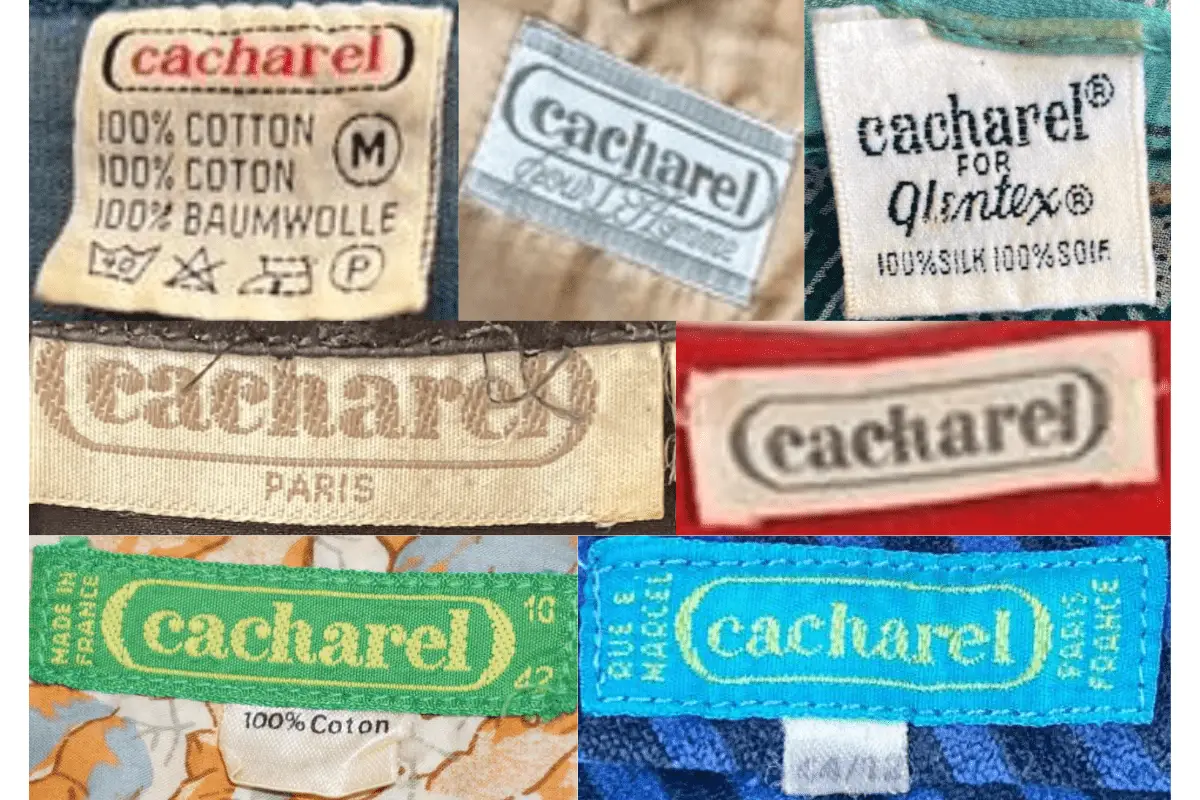
1970s Cacharel tags
1980s vintage Cacharel tags
- Tags often feature a more minimalistic design compared to the 1970s.
- Use of simple, bold fonts with “cacharel” prominently displayed.
- Occasionally, tags include additional branding details like “cacharel Paris” or fabric composition.
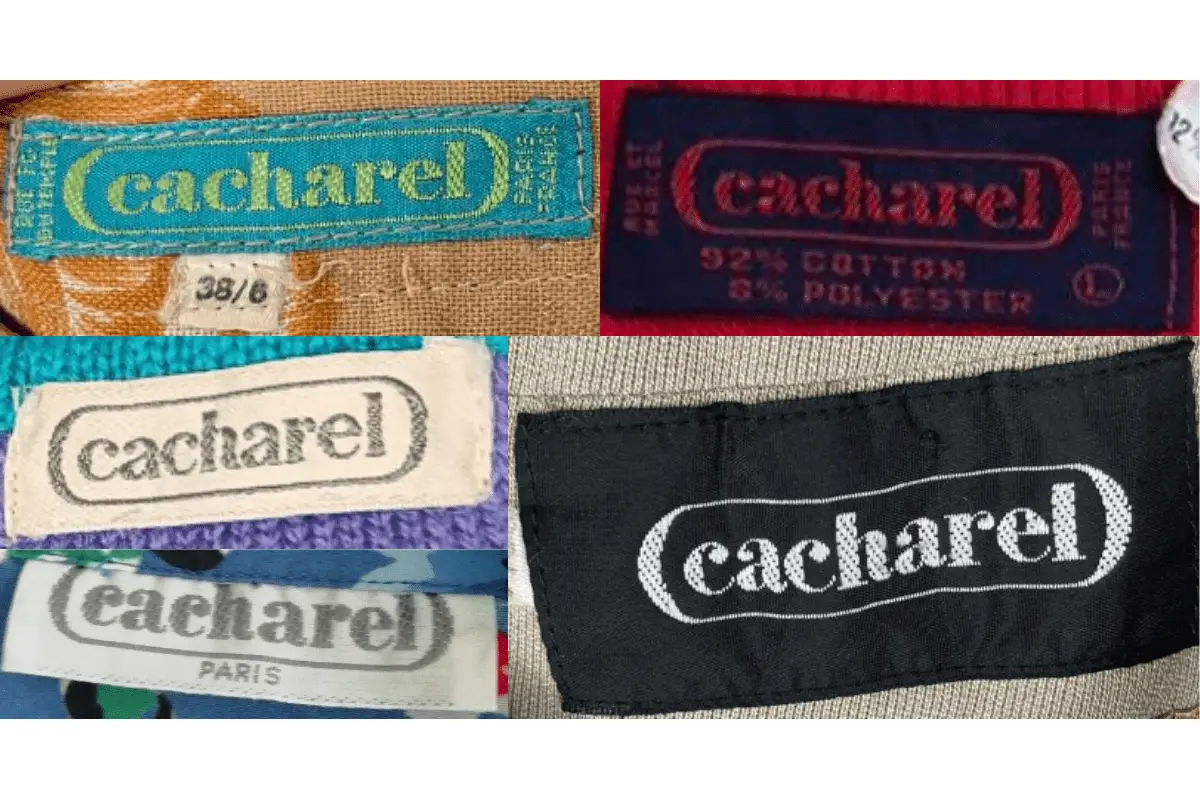
1980s Cacharel tags
1990s vintage Cacharel tags
- Introduction of more varied color schemes including black and white tags.
- Tags often have “cacharel” in lowercase with different background colors like purple and green.
- Inclusion of size indicators and sometimes additional branding slogans.
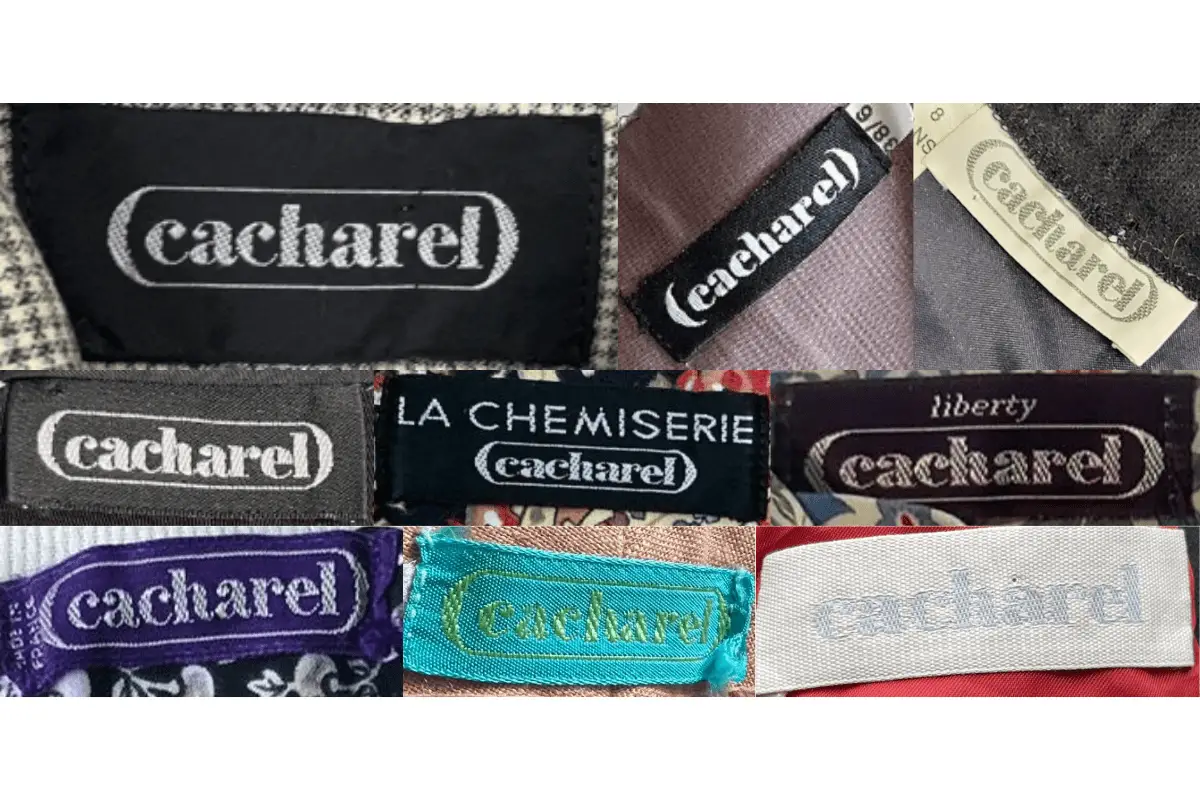
1990s Cacharel tags
2000s vintage Cacharel tags
- Modernized designs with a clean and professional look.
- Frequent use of loop tags featuring “cacharel” in lowercase.
- Bold serif lettering remains, often accompanied by additional information on separate tags.
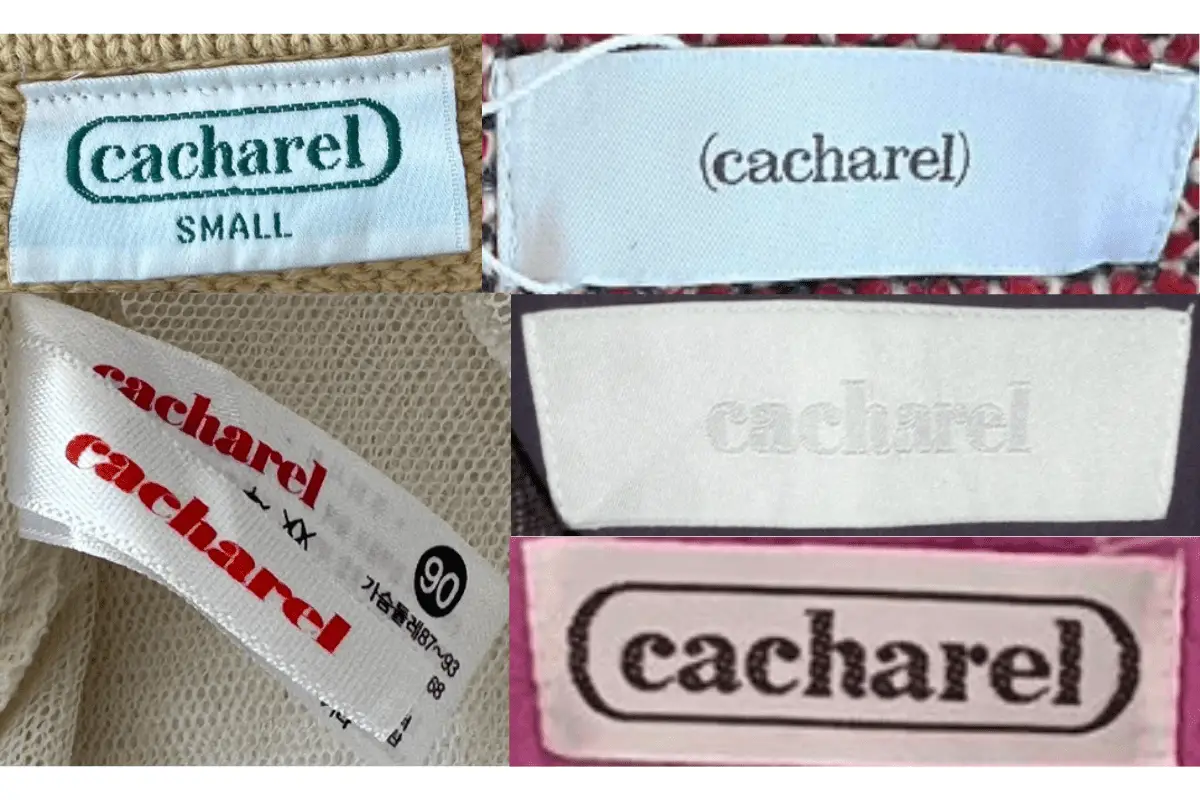
2000s Cacharel tags
2010s vintage Cacharel tags
- Modern layouts while retaining the classic logo.
- Tags feature a variety of colors and materials.
- Additional styles and layouts introduced, maintaining brand identity with contemporary aesthetics.
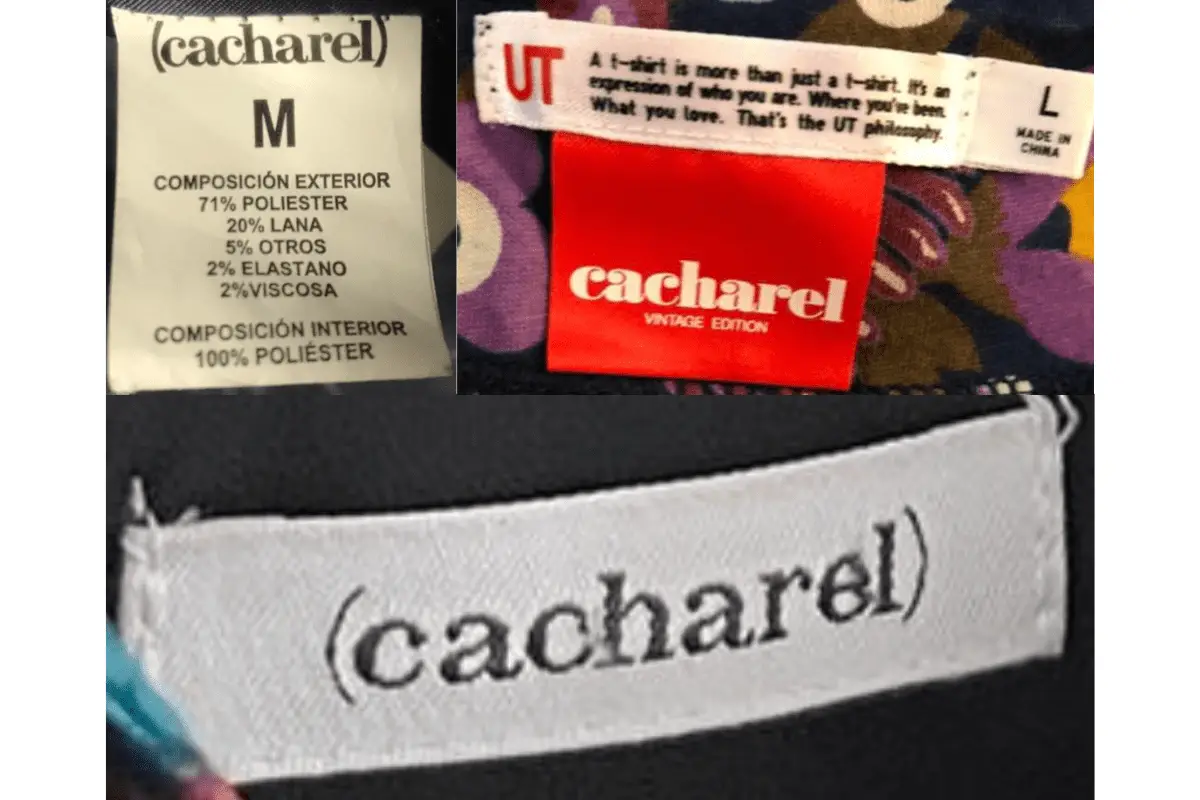
2010s Cacharel tags
